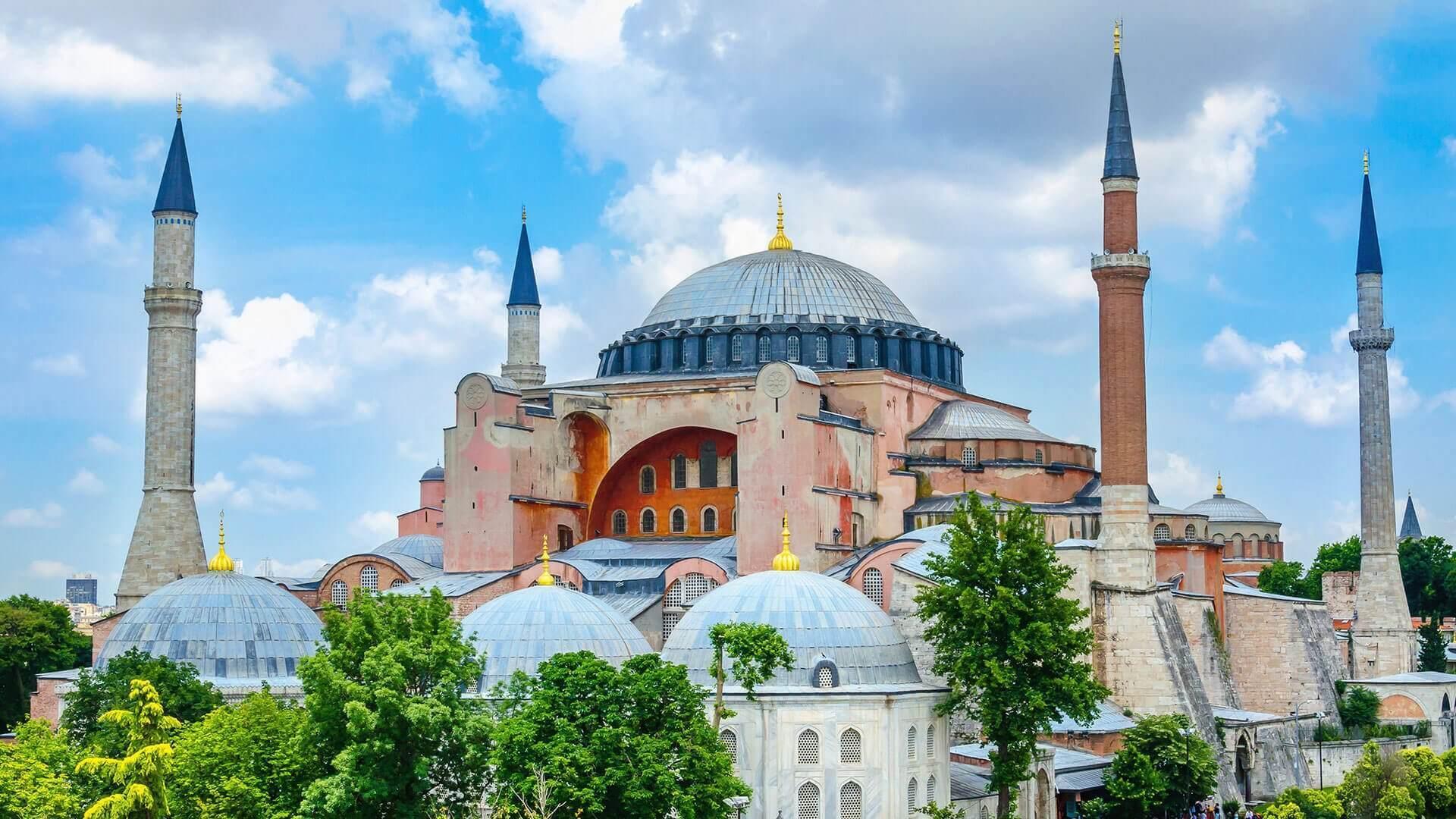Hagia Sophia visitors to reach three million threshold in 2019
ISTANBUL – Demirören News Agency

The long queues in front of the ticket office of Hagia Sophia Museum in recent days have been drawing attention as a sign of skyrocketing tourism figures in Istanbul.
Some 1.8 million visitors entered the top tourist attraction of the metropolis and a UNESCO World Heritage site in the first half of this year [2019], according to official data.
Over the course of the last 12 years, the number of Hagia Sophia visitors neared 31 million with the annual record of 3,574,043 entries in 2014.
Yearly visitor figure of the former Orthodox Christian patriarchal cathedral and the grand mosque of the Ottomans was 2,226,159 in 2007. It exceeded the threshold of 3 million first time in 2014.
However, with rising security concerns caused by terrorist attacks, the number of foreigners visiting Hagia Sophia plunged to 1,436,577 in 2016.
With a fast recovery last year, more than 2.9 million people visited Istanbul’s most famous landmark.
It is expected that the total number of entries into Hagia Sophia will reach 3 million again at the end of this year - an expectation based on the queues stretching from its ticket office to the nearby Sultanahmet Square in front of the Blue Mosque, which is another jewel of Istanbul.
The first and only six-minaret mosque of Ottoman architecture, Sultanahmet Mosque, colloquially named after its blue-tinted tiles, was built across from Hagia Sophia in 1617, exactly 1080 years after the latter was opened for worship as a cathedral under the order of the Byzantine empire.
Hagia Sophia was converted to a mosque when the Ottomans conquered Istanbul in 1453. In the wake of the collapse of the Ottoman Empire in the beginning of the 20th century, it was converted to a museum by the newborn Turkish republic.
Hagia Sophia is also an important place in the arts world with its architecture, grandness, size and functions.
Then-leader of the Eastern Romans, Byzantine emperor Justinianos ordered the construction of a new basilica when the older one was burned down during a revolt in 532.
The current structure was constructed by Isidoros and Anthemios, who were renowned architects of their time, between 532 and 537.
The emperor had to use ready materials for fast progress, so he had material brought to Istanbul from temples; marble and stone quarries from across Anatolia. The material came from temples in Ephesus in İzmir, from Aspendos in Antalya and from Baalbek in Lebanon.
During the Ottoman rule, the Hagia Sophia was turned into a külliye, or social mosque complex, with the building of a religious college, a soup kitchen and even a primary school. One of the more noticeable additions to the Hagia Sophia during this period was the Sultan’s Lodge – a raised kiosk built in the 18th century allowing Ottoman sultans to pray in the mosque without being seen. The imams and muezzins of Hagia Sophia and the mudarrisa’s professor, who worked in madrasahs built at the command of Mehmed the Conqueror, were at the forefront in the Ottoman science hierarchy.
Meanwhile, Istanbul is expected to receive 15.5 million tourists by the end of 2019, according to Istanbul Chamber of Commerce (ITO) President Şekib Avdagiç.
















